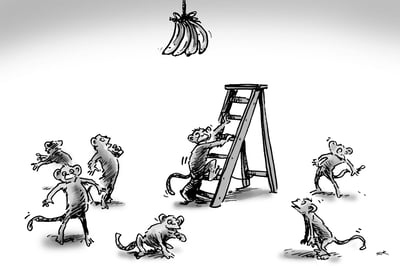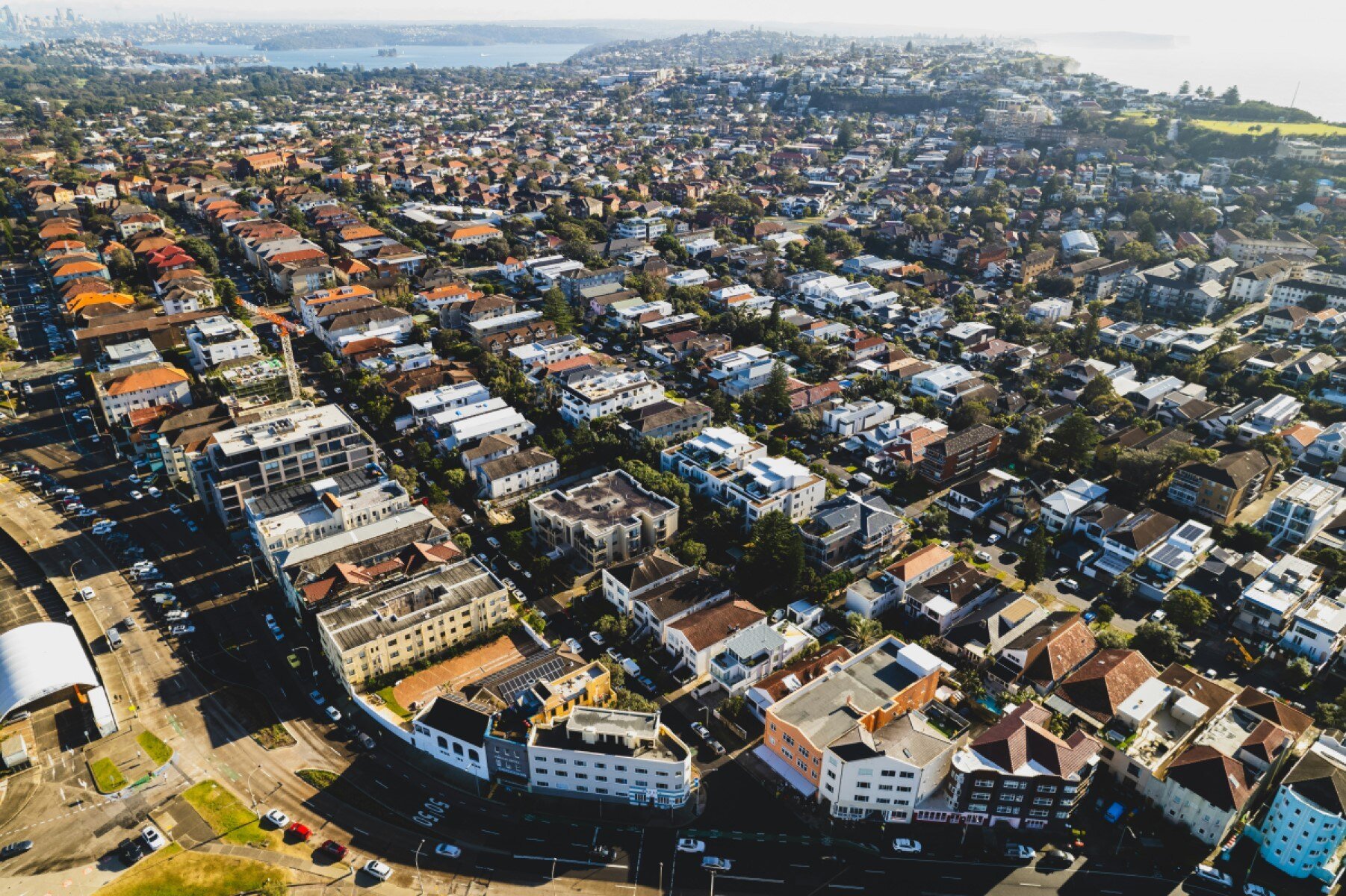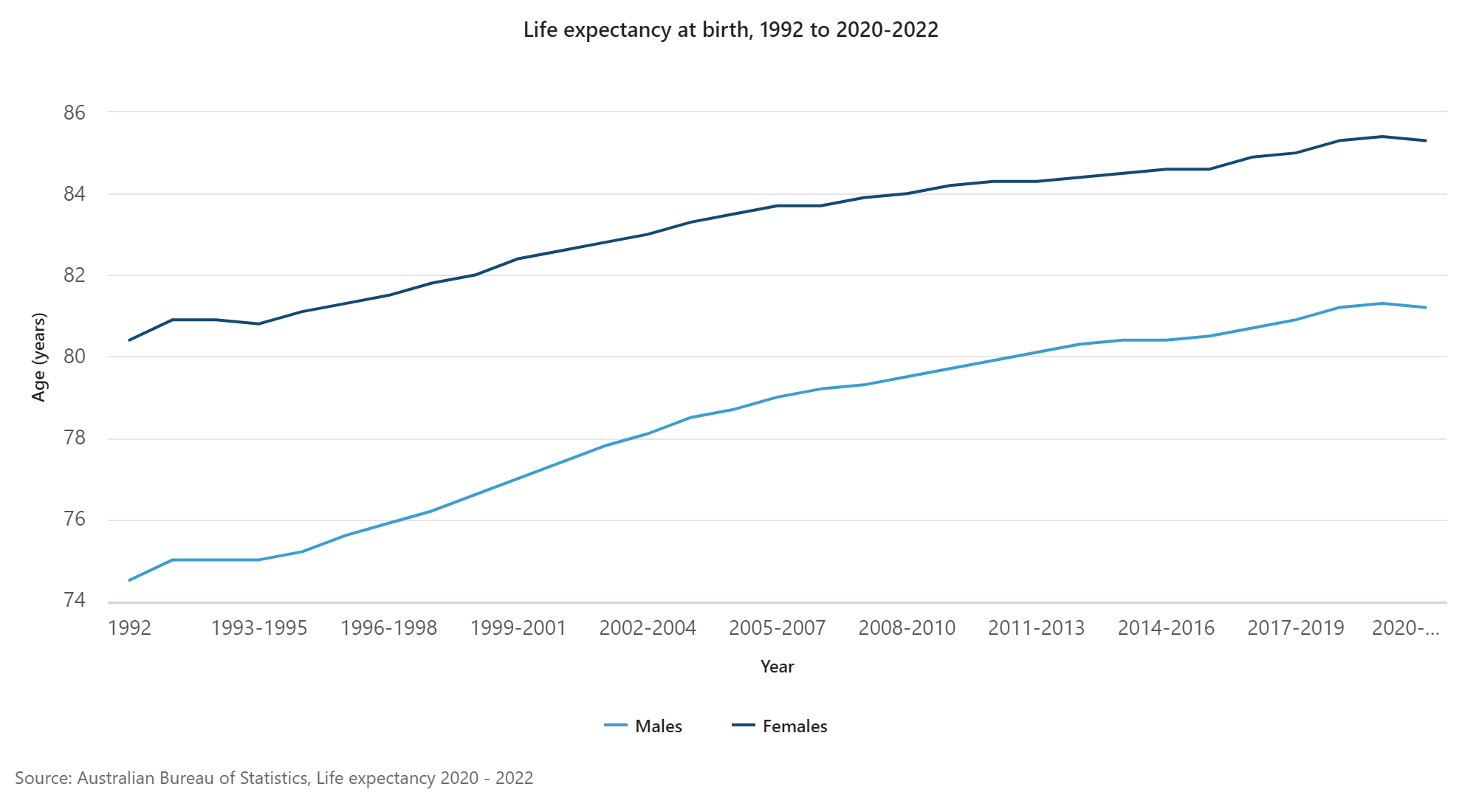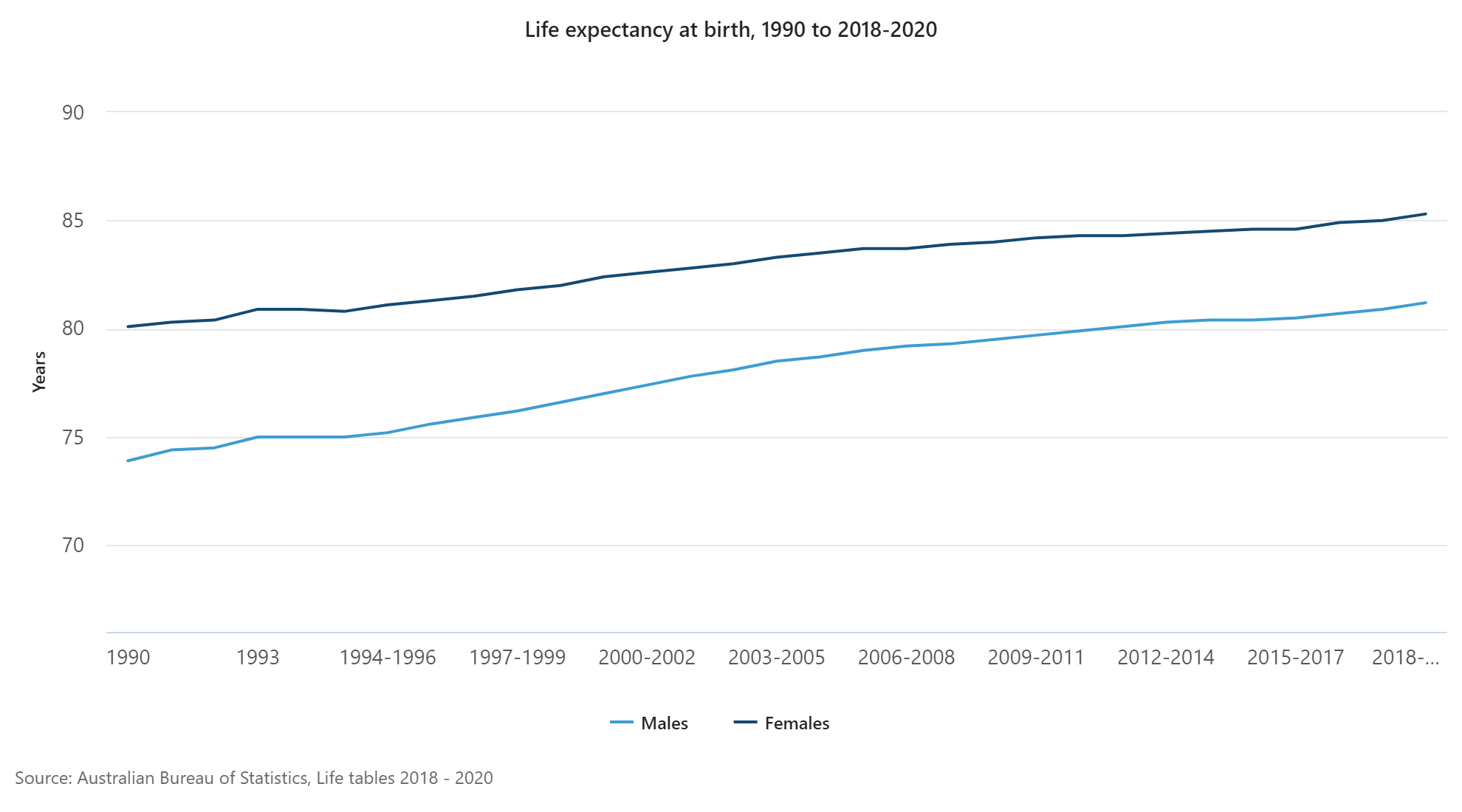You know the monkey ladder story, right?
It’s essentially a parable about resistance to change, but it actually does have a basis in a psychology experiment.
The story varies, but essentially it goes like this:
There was a cage containing five monkeys. Inside the cage, there was a banana hung above a ladder.
Of course, soon after the banana was suspended, a monkey went to climb the ladder to get to the banana. As soon as he started up the ladder, the psychologists sprayed all of the other monkeys with ice cold water.

After a while, another monkey made an attempt to obtain the banana. As soon as his foot touched the bottom rung of the ladder, all of the other monkeys were sprayed with ice cold water.
It’s wasn’t long before all of the other monkeys would physically prevent any monkey from climbing the ladder.
Now, the psychologists shut off the cold water, removed one monkey from the cage and replaced it with a new one.
The new monkey saw the banana and started to climb the ladder. Of course, all of the other monkeys attacked him. After another attempt and attack, he discovered that if he tried to climb the ladder, he would be assaulted. Next they removed another of the original five monkeys and replaced it with a new one. The newcomer went to the ladder and was attacked. The previous newcomer joined the attack because everyone else was doing it. Then, they replaced a third original monkey with a new one, then a fourth, then the fifth.
Every time the newest monkey tried to climb the ladder, he was attacked. At this point, the monkeys had all been replaced, so they had no idea why they were not permitted to climb the ladder or why they were beating any monkey that tried.
After replacing all the original monkeys, none of the remaining monkeys had ever been sprayed with cold water. Nevertheless, no monkey ever again approached the ladder to try for the banana.
Why not? Because as far as they know that’s the way it’s always been around here.
I came across a real world example of this recently on a vacation in the US Virgin islands. As part of US territory, they obtain their vehicles from the nearby USA, so they are all left hand drive, as you would expect.
But the interesting this is, they drive on the left side of the road, like we do here in Australia. Which is kind of dangerous, as you can’t see around the car in front as easily if you need to overtake. (which is one of the main reasons cars have the steering wheels closest to the middle of the road, and why left-hand drive vehicles are designed to be driven on the right)
But the interesting thing is, no-one seemed to know why they drive on the left. I asked several people and they didn’t know, it was just something they have always done.
A search for information on the web wasn’t much more fruitful. Apart from conjecture about perhaps because the islands were purchased from the Dutch in 1916, there’s not much more info on the subject. Even that is inconclusive because the Dutch, of course, drive on the right so why would they decide to drive on the left in the Caribbean?
One possibility is the Dutch did drive on the left (in their horses and carriages) until Holland was conquered by Napoleon in 1806…so maybe their islands never made that change.
In any case, even if no-one knows the reasons, they probably think it’s a bit hard to change now.
However – as an interesting aside – as recently as 2009, Samoa did change, overnight, from driving on the right to the left – and they even banned the sale of alcohol for three days to help minimise incidents!
But it got me thinking – are we sometimes bound to the past just because things were done that way 100 years ago, even if we don’t even know why? Are there any examples from Australia?
If you know of anything that fits this category – please comment!










